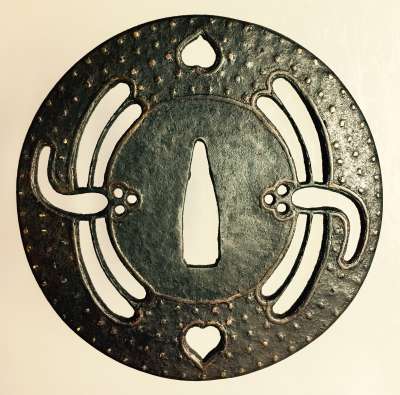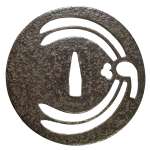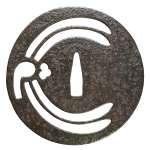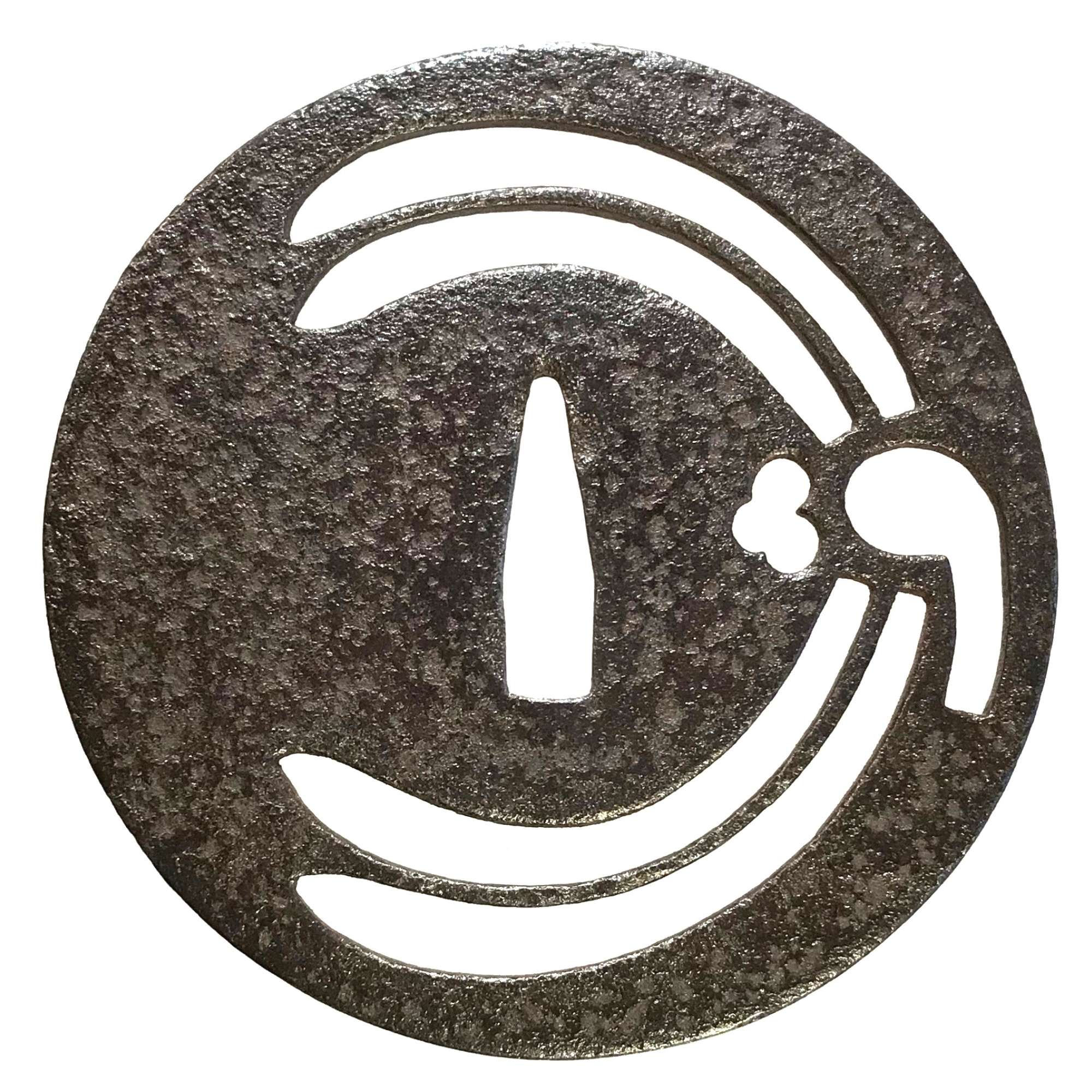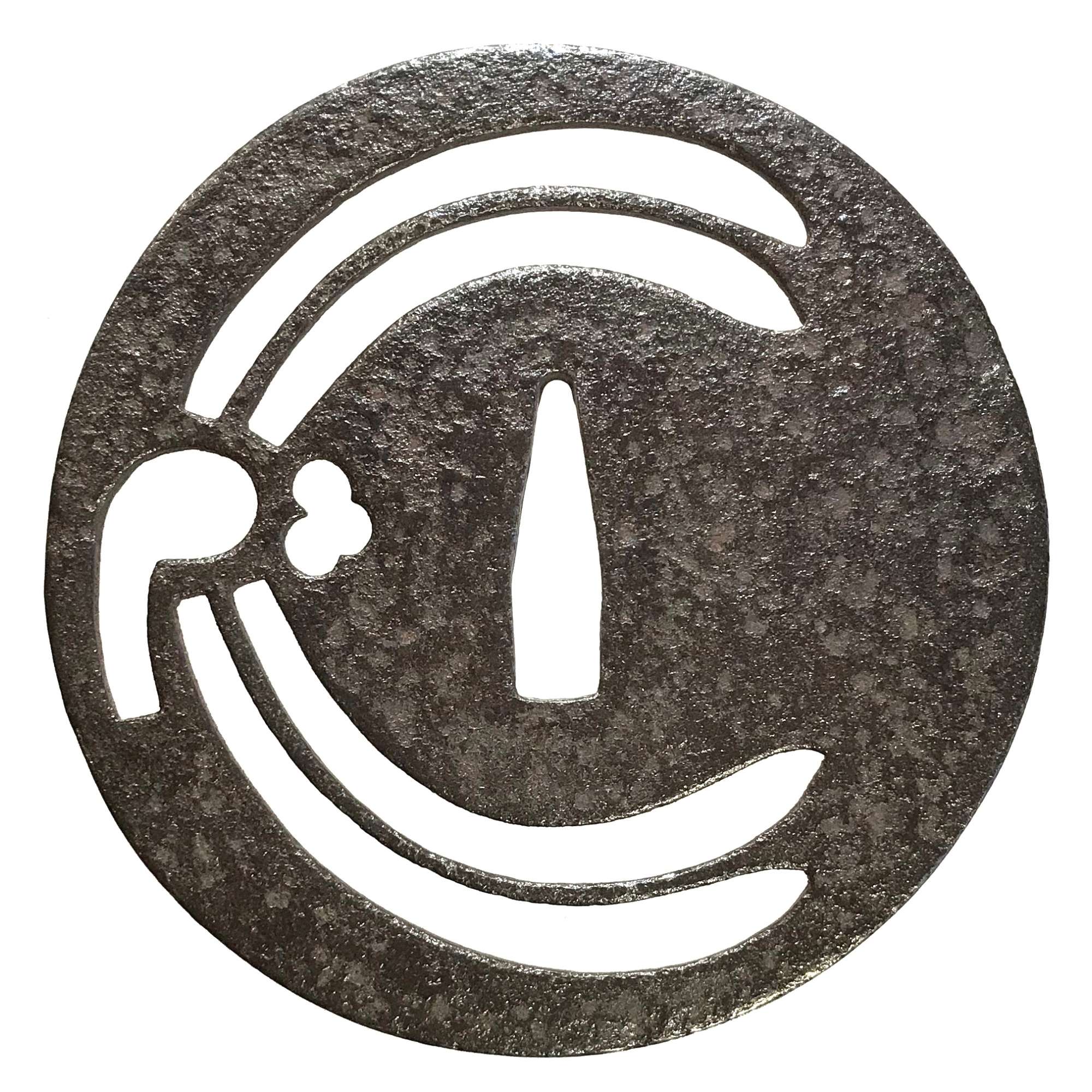Iron tsuba of round form decorated with design of dragonfly in negative openwork (in-sukashi).
It may be Ko-Tōshō (old Tōshō) or just Tōshō school, without a ‘Ko‘. Probably the dragonfly here is used as a family crest (mon).
Muromachi period. However, Boris Markhasin and Skip Holbrook insist this is a 20th-century machine-made tsuba.
Dimensions: Height: 95.0 mm. Width: 93.6 mm. Rim thickness: 2.1 mm. Center thickness: 2.3 mm. Nakago-ana: height = 30 mm, width = 7.8 mm.
A dragonfly design is described by John W. Dower as following “During the period of feudal warfare, the dragonfly is reputed to have been am especially popular design applied to arrow quivers, and some warriors adopted it as a family crest. One reason for this was the insect’s alternative names of katsu mushi and shogun mushi, both meaning ‘victory insect’.” Merrily Baird is even more talkative regarding the matter: “The dragonfly (tombo) in Japan is emblematic of martial success, as various names for the insect are homophones for words meaning “victory”. The dragonfly is also auspicious because references in the Kojiki and Nihongi link it in both name and shape to the old kingdom of Yamato. This legacy has led to the use of dragonfly as an emblem on arrow quivers and as family crest. It also appears occasionally in conjunction with such imperial motifs as the chrysanthemum. Used in a context devoid of historical associations, the dragonfly is a seasonal symbol of late summer and early autumn.”
Dragonfly was an extremely often motif for the tsuba in all times, primarily in earlier times, before Tokugawa pacified the nation.
The same motif is used on Ōnin tsuba in this collection:
